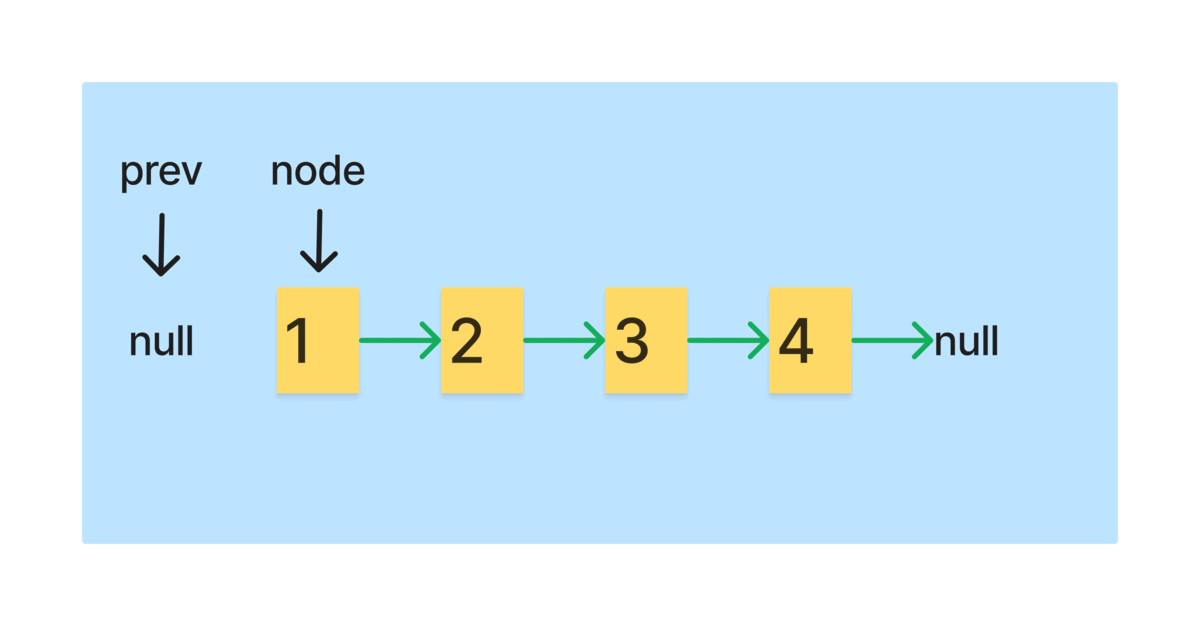206. Reverse Linked List
문제 설명
단일 연결 리스트의 head가 주어질 때, 리스트를 뒤집고, 뒤집어진 리스트를 리턴하라.
해결 방법
재귀를 이용하여 리스트를 뒤집는다.
- 재귀의 종료 조건 받은
node인자가null일 때 종료한다(리스트를 끝까지 순회 했을 때). - 현재 리스트의 다음 노드를 저장하고, 이전 노드를 다음 노드로 연결한다.
- 재귀 탐색이 종료 될 때까지 반복한다.
풀이 코드
1
2
3
4
5
6
7
8
9
10
11
12
13
14
15
import { ListNode } from '../utils';
export function reverseList(head: ListNode | null): ListNode | null {
if (!head) return head;
const reverse = (node: ListNode, prev: ListNode | null = null): ListNode => {
if (!node) return prev;
const next = node.next;
node.next = prev;
return reverse(next, node);
};
return reverse(head);
}
테스트 코드
1
2
3
4
5
6
7
8
9
10
11
12
13
14
15
16
17
18
19
20
21
22
23
24
25
26
import { describe, expect, test } from '@jest/globals';
import { reverseList } from '.';
import { convertArrayToList } from '../utils';
describe(' description', () => {
test('example test 1', () => {
const input = convertArrayToList([1, 2, 3, 4, 5]);
const output = reverseList(input);
const expected = convertArrayToList([5, 4, 3, 2, 1]);
expect(output).toEqual(expected);
});
test('example test 2', () => {
const input = convertArrayToList([1, 2]);
const output = reverseList(input);
const expected = convertArrayToList([2, 1]);
expect(output).toEqual(expected);
});
test('example test 3', () => {
const input = convertArrayToList([]);
const output = reverseList(input);
const expected = convertArrayToList([]);
expect(output).toEqual(expected);
});
});
구현 후
해당 문제에서 재귀를 이미지로 만들 때 next 포인터를 넣을 지 말지 고민했다.
next 포인터를 넣지 않으면 흐름 상 node.next와의 연결이 끊기기 때문에 리스트를 탐색할 수 없다.
next를 넣지 않아도 동작을 이해하는데 크게 문제가 없었으므로 이미지로 만들 때는 next포인터를 제외하고 만들었다.
